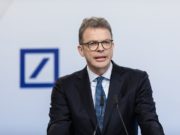UK Central Bank Bank of England Increases Interest Rate by 0.75% to 3%, Next Meeting on 15th December 2022
3rd November 2022 | Hong Kong
United Kingdom central bank Bank of England (BOE) has increased its key interest rate by 0.75% to 3%, with the next meeting scheduled on 15th December 2022. Bank of England: “The Bank of England’s Monetary Policy Committee (MPC) sets monetary policy to meet the 2% inflation target, and in a way that helps to sustain growth and employment. At its meeting ending on 2 November 2022, the MPC voted by a majority of 7-2 to increase Bank Rate by 0.75 percentage points, to 3% … … In projections conditioned on the alternative assumption of constant interest rates at 3%, activity is stronger than in the MPC’s forecast conditioned on market rates, although GDP is still expected to be falling at the end of 2023.” See below for full statement.
“ UK Central Bank Bank of England Increases Interest Rate by 0.75% to 3%, Next Meeting on 15th December 2022 “
Bank of England Monetary Policy Summary, November 2022 – 3/11/22

Bank of England: The Bank of England’s Monetary Policy Committee (MPC) sets monetary policy to meet the 2% inflation target, and in a way that helps to sustain growth and employment. At its meeting ending on 2 November 2022, the MPC voted by a majority of 7-2 to increase Bank Rate by 0.75 percentage points, to 3%. One member preferred to increase Bank Rate by 0.5 percentage points, to 2.75%, and one member preferred to increase Bank Rate by 0.25 percentage points, to 2.5%.
As set out in the accompanying November Monetary Policy Report, the MPC’s updated projections for activity and inflation describe a very challenging outlook for the UK economy.
Since the MPC’s previous forecast, there have been significant developments in fiscal policy. Uncertainty around the outlook for UK retail energy prices has fallen to some extent following further government interventions. For the current November forecast, and consistent with the Government’s announcements on 17 October, the MPC’s working assumption is that some fiscal support continues beyond the current six-month period of the Energy Price Guarantee (EPG), generating a stylised path for household energy prices over the next two years. Such support would mechanically limit further increases in the energy component of CPI inflation significantly, and reduce its volatility. However, in boosting aggregate private demand relative to the August projections, the support could augment inflationary pressures in non-energy goods and services.
Other fiscal measures announced up to and including 17 October also support demand relative to the August projection. The MPC’s forecast does not incorporate any further measures that may be announced in the Autumn Statement scheduled for 17 November.
There have been large moves in UK asset prices since the August Report. These partly reflect global developments, although UK-specific factors have played a very significant role during this period. The MPC’s projections are conditioned on the path of Bank Rate implied by financial markets in the seven working days leading up to 25 October. That path rose to a peak of around 5¼% in 2023 Q3, before falling back. Overall, the path is around 2¼ percentage points higher over the next three years than in the August projection. The higher market yield curve has pushed new mortgage rates up sharply. Financial conditions have tightened materially, pushing down on activity over the forecast period.
GDP is expected to decline by around ¾% during 2022 H2, in part reflecting the squeeze on real incomes from higher global energy and tradable goods prices. The fall in activity around the end of this year is expected to be less marked than in August, however, reflecting support from the EPG. The labour market remains tight, although there are signs that labour demand has begun to ease.
CPI inflation was 10.1% in September and is projected to pick up to around 11% in 2022 Q4, lower than was expected in August, reflecting the impact of the EPG. Services CPI inflation has risen. Nominal annual private sector regular pay growth rose to 6.2% in the three months to August, 0.6 percentage points higher than expected in the August Report.
In the MPC’s November central projection that is conditioned on the elevated path of market interest rates, GDP is projected to continue to fall throughout 2023 and 2024 H1, as high energy prices and materially tighter financial conditions weigh on spending. Four-quarter GDP growth picks up to around ¾% by the end of the projection. Although there is judged to be a significant margin of excess demand currently, continued weakness in spending is likely to lead to an increasing amount of economic slack emerging from the first half of next year, including a rising jobless rate. The LFS unemployment rate is expected to rise to just under 6½% by the end of the forecast period and aggregate slack increases to 3% of potential GDP.
In the MPC’s central projection, CPI inflation starts to fall back from early next year as previous increases in energy prices drop out of the annual comparison. Domestic inflationary pressures remain strong in coming quarters and then subside. CPI inflation is projected to fall sharply to some way below the 2% target in two years’ time, and further below the target in three years’ time.
In projections conditioned on the alternative assumption of constant interest rates at 3%, activity is stronger than in the MPC’s forecast conditioned on market rates, although GDP is still expected to be falling at the end of 2023. CPI inflation is projected to be a little above the target at the end of the second year. However, it falls more than a percentage point below the target at the end of the third year. The risks around both sets of inflation projections are judged to be skewed to the upside in the medium term, however, in part reflecting the possibility of more persistence in wage and price setting.
The MPC’s remit is clear that the inflation target applies at all times, reflecting the primacy of price stability in the UK monetary policy framework. The framework recognises that there will be occasions when inflation will depart from the target as a result of shocks and disturbances. The economy has been subject to a succession of very large shocks. Monetary policy will ensure that, as the adjustment to these shocks continues, CPI inflation will return to the 2% target sustainably in the medium term. Monetary policy is also acting to ensure that longer-term inflation expectations are anchored at the 2% target.
The labour market remains tight and there have been continuing signs of firmer inflation in domestic prices and wages that could indicate greater persistence. Currently announced fiscal policy, including the MPC’s working assumption about continued fiscal support for household energy prices, will also support demand, relative to the Committee’s projections in August. The Committee will take account of any additional information in the Government’s Autumn Statement at its December meeting and in its next forecast in February.
In view of these considerations, the Committee has voted to increase Bank Rate by 0.75 percentage points, to 3%, at this meeting. The majority of the Committee judges that, should the economy evolve broadly in line with the latest Monetary Policy Report projections, further increases in Bank Rate may be required for a sustainable return of inflation to target, albeit to a peak lower than priced into financial markets. There are, however, considerable uncertainties around the outlook.
The Committee continues to judge that, if the outlook suggests more persistent inflationary pressures, it will respond forcefully, as necessary. The MPC will take the actions necessary to return inflation to the 2% target sustainably in the medium term, in line with its remit. The Committee will, as always, consider and decide the appropriate level of Bank Rate at each meeting.
Minutes of the Monetary Policy Committee meeting ending on 2 November 2022
1: Before turning to its immediate policy decision, and against the backdrop of its latest economic projections, the Committee discussed: the international economy; monetary and financial conditions; demand and output; and supply, costs and prices.
The international economy
2: UK-weighted global GDP growth was likely to have remained weak in 2022 Q3, growing at a similar pace to the preceding quarter, and with the latest indicators suggesting that this would continue in the near term. Global inflation remained elevated, driven by higher energy prices and tight labour markets, but supply-chain bottlenecks had eased somewhat.
3: GDP in the euro area had increased by 0.2% in 2022 Q3 according to the preliminary flash estimate, in line with market expectations and much weaker than the 0.8% growth reported in Q2. The slowdown had largely reflected the continuing squeeze on household real incomes due to high energy and food prices. Several European governments had announced a range of policy measures to address the impact of high energy prices on households and businesses. These were expected to support growth.
4: In the United States, according to the advance estimate, third-quarter GDP had risen by 0.6%, having fallen slightly in the previous two quarters. Growth had been boosted by net trade in particular, with a rise in both goods and services exports, and a fall in goods imports. Financial conditions in the United States had continued to tighten, as the Federal Open Market Committee (FOMC) had tightened monetary policy in response to inflationary pressures. This had also contributed to a slowing in the US housing market.
5: The US dollar effective exchange rate had appreciated by over 10% since the start of the year. This could have had important implications for the global economy, particularly for non-China emerging market economies (NCEMEs), through its impact on global asset prices. Capital outflows from NCEMEs had, however, generally been relatively gradual, and many NCEME exchange rates had depreciated by less against the US dollar than some advanced economy currencies, in part due to a number of NCEME central banks having tightened monetary policy early and significantly, as well as some of these countries being commodity exporters. Nonetheless, this tightening in financial conditions implied a weakening in the outlook for NCEMEs.
6: Official Chinese GDP data suggested growth in 2022 Q3 had been stronger than expected, at 3.9%, as Covid-related restrictions were loosened. Accommodative monetary and fiscal policies had also boosted growth. The pickup in Q3 was in part a rebound from a 2.7% contraction recorded in Q2. Looking ahead, the ongoing impact of Covid-related restrictions, weakness in the housing sector and a slowing in global demand were expected to weigh on activity.
7: European gas spot prices had fallen markedly since their peak in August. At the time of this MPC meeting, the Dutch Title Transfer Facility spot price, a measure of European wholesale gas prices, was around €117 per MWh, around 40% lower than at the time of the previous meeting. This had been driven partly by the build-up of gas stocks in many European countries ahead of the winter. Gas futures prices remained elevated though, which reflected the ongoing impact of Russia’s restriction of gas supplies to Europe.
8: Global supply-chain bottlenecks had eased as supply conditions had improved and as global demand had slowed. Shipping costs had fallen from their peaks earlier in the year and other indicators of supply constraints pointed to an easing of pressures over the past few months. The Brent crude oil spot price was little changed from September, at $95 a barrel, although it remained 20% higher than at the start of the year. Metals prices had fallen slightly since September. Global agricultural goods prices were broadly unchanged, but had fallen by around 20% from their recent peaks in 2022 Q2.
9: Labour markets had remained tight in the United States and in the euro area. Vacancies were elevated relative to unemployment. In the United States, although this ratio, a summary measure of labour market tightness, had fallen back a little in recent months, it remained near record levels. Wage growth was elevated in both the United States and the euro area, although it had slowed somewhat in recent outturns in the United States.
10: According to the flash estimate, euro-area annual headline HICP inflation in October had increased to 10.7%, with energy prices continuing to be the key driver of high inflation. This was significantly higher than had been expected, with the contribution from energy accounting for the largest part of the surprise. In the United States, annual headline PCE inflation had fallen from its recent peak, to 6.2% in September, and annual US CPI inflation had fallen to 8.2%, reflecting the fall in oil and hence fuel prices. Services inflation had been higher in the United States than in the euro area, which had in part reflected greater labour market tightness.
Monetary and financial conditions
11: The level of short and longer-term market interest rates in the United Kingdom were overall only modestly changed compared to the MPC’s September meeting, but were still substantially higher than at the time of the August Monetary Policy Report. In recent weeks, there had been a period of exceptional volatility in UK financial markets, with significant repricing of UK financial assets, particularly affecting long-dated UK government debt. Market interest rates had risen very sharply after the Government’s Growth Plan was announced on 23 September and had been volatile thereafter, before retracing.
12: On 28 September, following a period of volatility and market illiquidity, the Bank of England had announced a strictly time-limited and targeted financial stability operation to buy long-dated UK government bonds, in order to address market dysfunction and to reduce any risks to financial stability and core funding markets. On 10 and 11 October, the Bank had announced additional measures, including undertaking further targeted daily purchase operations for index-linked UK government bonds. In line with what the Bank had announced from the outset of these operations, all bond purchases had ceased on 14 October. These financial stability operations had been designed to allow liability-driven investment (LDI) funds affected by the significant repricing of UK financial assets time to reduce their leverage and to increase their resilience to future stresses.
13: In the days leading up to the MPC’s November meeting, conditions in UK financial markets had stabilised somewhat, leaving the overall moves in gilt yields since the MPC’s previous meeting relatively small. On balance, across major advanced economies, the near-term path for market-implied policy rates had not changed materially since the September meeting, but these paths and longer-term yields remained substantially higher than at the time of the August Report. Overall, moves since August had been largest in the United Kingdom, where ten-year government bond yields had risen by around 160 basis points, compared to around 130 basis points in the United States and euro area. Over this period, global equity prices had fallen and spreads on corporate debt had widened. These falls in risky asset prices had been somewhat more pronounced in the United Kingdom, relative to other major advanced economies.
14: Central banks in major advanced economies had continued to tighten monetary policy since the MPC’s September meeting and were expected by market participants to continue to react strongly to near-term inflationary pressures. At its meeting on 27 October, the ECB Governing Council had raised its key policy interest rates by 75 basis points, in line with prior market expectations and following an increase of 75 basis points at its September meeting. The Governing Council expected to raise interest rates further, while noting that substantial progress had been made in withdrawing monetary policy accommodation. The FOMC had also increased the target range for the federal funds rate by 75 basis points at its September meeting to 3 to 3¼%, and market contacts expected a further increase of 75 basis points at the FOMC’s meeting ending on 2 November.
15: The median respondent to the Bank’s latest Market Participants Survey (MaPS) expected Bank Rate to be increased by 75 basis points at this meeting, broadly in line with the expected increase in Bank Rate derived from market pricing.
16: The MPC’s projections were conditioned on the path of Bank Rate implied by financial markets in the seven working days leading up to 25 October. That path was rising to a peak of around 5¼% in 2023 Q3, before falling back. In the immediate run-up to the MPC’s November meeting, market-implied expectations for the path of Bank Rate peaked at around 4¾% in the second half of 2023, broadly in line with the peak at the time of the MPC’s September meeting. The expected path for Bank Rate in the latest MaPS, conducted between 19 and 21 October, had remained lower than the market-implied path but had shifted materially higher relative to the previous survey conducted at the start of September. The median expected path now had a peak in Bank Rate of 4½% in May 2023, 1 percentage point higher than the peak of 3½% in the previous survey. Thereafter, respondents expected a somewhat faster decline in Bank Rate than implied by the market path, with the median expectation for Bank Rate at the three-year horizon falling to 3%.
17: Recent changes in market expectations for the path of Bank Rate had followed substantial upward moves between the August and September meetings. In the United Kingdom, the market-implied path for policy rates was now on average around 2 percentage points higher over the next three years than at the time of the August Report. That rise had been larger than in the United States and euro area. According to market participants, the rise in UK rates since August had reflected a number of factors, including the impact of recent fiscal announcements on UK demand, a higher premium required to invest in UK assets, data news on the degree of near-term domestic inflationary pressures, global factors, market illiquidity, and perceptions of the central bank reaction function.
18: Market-implied measures of medium-term inflation compensation had risen somewhat in the United States and euro area since the MPC’s September meeting, but had remained within recent ranges. In the United Kingdom, medium-term inflation compensation measures had been very volatile and had fallen sharply since the MPC’s previous meeting. These moves had, however, been distorted by the volatile repricing in long-dated and index-linked UK government debt and associated pressure on LDI funds during that period. Respondents to the MaPS had provided an alternative gauge of inflation expectations among market participants. The median respondent’s expectation for CPI inflation had risen since the previous survey at both the three and five-year horizons, to 3% and 2.5% respectively.
19: In the immediate run-up to the MPC’s November meeting, the sterling effective exchange rate had been around 1¾% higher compared to the previous MPC meeting but had remained around 2¾% lower relative to the August meeting. Those relatively modest overall changes had masked volatile moves in the exchange rate during the recent period of market turbulence, with sterling briefly reaching an historic low against the dollar. Consistent with this, sterling implied volatility, a measure of the uncertainty around the outlook for the exchange rate, had picked up significantly, before falling back in the most recent data. Sterling risk reversal measures derived from foreign exchange options had also fallen sharply during the period of market volatility, suggesting that the price of insuring against the risk of a large depreciation in sterling significantly exceeded the price of insuring against a large appreciation.
20: Lending rates for new mortgages had increased sharply since the MPC’s previous meeting, reflecting the sharp rise in risk-free market rates during the period as well as increases since the August Report. The monthly average quoted rate on a two-year fixed-rate 75% loan-to-value (LTV) mortgage had increased from 3.6% in August, to 4.2% in September. Preliminary data suggested that the rate had increased significantly further to 6.0% in October, its highest rate since 2008. Rates had increased across all major LTV categories, with the pass-through of higher reference rates occurring faster than had typically been the case in the past. Reference rates had fallen back from their highs in late September, and there had been moderate falls in some mortgage rates in the days leading up to this MPC meeting.
21: During the period of volatility in UK interest rate markets, the number of available mortgage products across all LTVs had fallen sharply for a short period. The number of available products had since recovered somewhat, but remained below its previous level. Interest rates on some unsecured household borrowing products had also increased since the MPC’s September meeting. Lenders had reported in the latest Credit Conditions Survey (CCS), which had been carried out before the exceptional volatility in UK interest rate markets, that credit availability had declined in 2022 Q3 for both secured and unsecured household borrowing and that further declines were expected in Q4.
22: Bank lending rates to corporates had also increased in the latest data for September. Lenders responding to the Bank’s latest CCS had expected overall corporate credit availability to worsen in Q4 and more recent market intelligence also suggested that there had been a contraction in the availability of credit to corporates in recent weeks, particularly for riskier borrowers.
23: Deposit rates for both sight and term deposits had risen since the MPC’s September meeting. The rate on sight deposits had increased by 35 basis points while the rate on two-year fixed-rate bonds had increased by over 100 basis points. Household deposit flows had increased in September. Non-financial corporations had reduced their deposits, while financial corporations had increased their deposits materially, which was likely to reflect the significant market volatility towards the end of the month.
Demand and output
24: UK quarterly GDP growth in 2022 Q2 had been revised up to 0.2% in the Quarterly National Accounts. Estimates of GDP had been revised lower in preceding quarters, such that the level of GDP in Q2 was now estimated to be slightly below its pre-Covid level. Downward revisions to past estimates of health output had more than offset upward revisions to market sector output.
25: Monthly GDP was estimated to have fallen by 0.3% in August, following a 0.1% increase in July. Bank staff now expected GDP to have contracted by 0.5% in 2022 Q3 as a whole, 0.9 percentage points weaker than anticipated in the August Monetary Policy Report. Although the expected weakness in part reflected the additional bank holiday for the Queen’s state funeral in September, it was primarily driven by weakness in underlying output. That underlying weakness was in part likely to be a reflection of the fall in real household incomes, and hence consumer spending, due to higher global energy and tradable goods prices.
26: Most business survey indicators had weakened since the MPC’s September meeting. For example, the S&P Global/CIPS UK PMI flash composite output index had fallen to 47.2 in October, below its long-run average and consistent with negative GDP growth. The future output index had also fallen significantly, from 61.4 in September to 55.0 in October. According to the Bank’s Agents, economic activity had continued to weaken, as squeezed real incomes and increased uncertainty about the outlook weighed on confidence and demand. Growth was also constrained by ongoing shortages of labour and goods, though to a lesser extent than previously.
27: Following 0.2% growth in 2022 Q2, household consumption growth was expected to fall in both Q3 and Q4. Retail sales volumes had fallen by 1.4% in September. This had continued the downward trend in retail spending observed since the second half of 2021, although the weakness in part reflected the additional bank holiday for the Queen’s state funeral. Contacts of the Bank’s Agents had reported that the squeeze on real incomes was being felt across most areas of consumer spending. GfK consumer confidence had fallen to a new record-low level in September, and had remained close to that low in October, despite recovering a little. The September RICS survey pointed to continued weakness in housing demand and a wider set of survey indicators suggested that UK house price inflation had started to slow.
28: Business investment had been weak for some time and, despite increasing by 3.7% in 2022 Q2, was around 8% below its pre-Covid level. A range of evidence suggested that business investment was likely to remain subdued in the near term. For example, in the October Decision Maker Panel survey, uncertainty had remained elevated. Intelligence from the Bank’s Agents highlighted that this uncertainty, as well as rising costs, tighter financial conditions and increased working capital requirements, were weighing on companies’ investment plans.
29: The Government had announced a reversal of the 1.25 percentage point increase in the National Insurance contribution from 6 November 2022 and the cancellation of the Health and Social Care Levy, which had been due to come into force from 6 April 2023. It had also made changes to Stamp Duty Land Tax, doubling the nil rate band to £250,000 and increasing the level at which stamp duty started for first-time buyers from £300,000 to £425,000. The Government had also cancelled the planned 1 percentage point cut in the basic rate of income tax from April 2024, keeping it at 20% until economic conditions allowed for it to be cut. It had permanently set the Annual Investment Allowance at £1 million, rather than allowing it to fall in April 2023.
30: Overall, together with the government’s Energy Price Guarantee (EPG) that had been announced prior to the MPC’s September meeting and subsequently adjusted, these measures were expected to support demand. A fuller plan for UK tax and spending was due to be published on 17 November in the Autumn Statement.
Supply, costs and prices
31: The Labour Force Survey (LFS) unemployment rate had fallen to 3.5% in the three months to August, its lowest level since 1974. The vacancy-to-unemployment ratio, a measure of labour market tightness, had reached a new record high, as unemployment had fallen by more than the number of vacancies. The LFS inactivity rate had risen to around 1 percentage point above its pre-Covid level, with that increase largely accounted for by a greater proportion of people of working age who did not want a job, within which there had been an increase in long-term sickness. In contrast, the inactivity rate had fallen in the euro area since the onset of the pandemic, and had risen to a lesser extent in the United States.
32: There were signs that labour demand had begun to ease, although the labour market had remained tight. The number of vacancies had fallen somewhat further in September, and survey measures of employment intentions had also softened, albeit none were pointing to outright falls in employment. The latest KPMG/REC UK Report on Jobs had continued to show demand for staff rising, but at a slower rate, alongside low staff availability. A growing number of contacts of the Bank’s Agents had paused recruitment or were planning to allow headcount to fall through attrition, but most firms were reportedly reluctant to make any redundancies due to ongoing recruitment difficulties.
33: Indicators of nominal pay growth had remained strong, consistent with the effects of continued labour market tightness alongside higher inflation outturns and short-term inflation expectations. Annual private sector regular Average Weekly Earnings growth had risen to a little above 6% in the three months to August, and to further above the August Monetary Policy Report projection. The Agents were reporting that pay settlements had stabilised at around 5% to 7%. Recruitment difficulties during the post-Covid recovery had led to more consumer-facing firms moving away from hourly pay rates that were aligned to the statutory National Living Wage and moving towards paying the voluntary UK real Living Wage, which had risen by around 10%. An increasing number of firms had also made, or were preparing to make, salary payments in addition to their normal pay round, including one-off payments to staff to try to help to offset rising living costs.
34: Twelve-month CPI inflation had risen slightly to 10.1% in September, reflecting a pickup across non-energy components. Food price inflation had increased to 14.5%, higher than had been expected ahead of the release, with offsetting news across other items. Core CPI inflation, excluding food, beverages, tobacco and energy, had risen a little to 6.5%. In aggregate, both CPI inflation and core CPI inflation had been broadly in line with the August Report forecast.
35: CPI inflation was expected to rise to almost 11% in October, as retail gas and electricity prices increased to levels consistent with the Government’s EPG. The Government had announced that the EPG would remain in place for six months, and that a Treasury-led review would consider how to support households with their energy bills after April 2023. The Government had also announced that this further support would be at a lower cost than if the EPG had remained at the same level for a full two years, while ensuring enough support for those in need.
36: Under the November Report short-term forecast, CPI inflation was projected to fall towards 10% in 2023 Q1. The projected decline was in part a reflection of strong price increases around the turn of this year beginning to fall out of the annual calculation. Survey indicators of costs and prices, such as the composite input and output price PMIs, had also tended to moderate in recent months, albeit they had remained elevated relative to their historical averages. Core goods CPI inflation was expected to fall amid signs of supply-chain pressures easing and demand weakening. Services CPI inflation was expected to remain close to recent rates of around 6%, however, in part due to continued pass-through of labour and other costs, including energy.
37: Business and household measures of inflation expectations had remained elevated, albeit that some indicators had ticked down more recently. Respondents to the Decision Maker Panel had lowered their own price expectations for the year ahead in October, with a modest narrowing of the upper tail of the distribution, and with a larger fall in their expectations for CPI inflation. The Citi/YouGov household measures of inflation expectations over the next year and next five-to-ten years ahead were broadly unchanged in October, having fallen in September from their record high levels in August. Professional forecasters responding to the Bank’s latest quarterly survey were projecting CPI inflation to be 2.4%, on average, in three years’ time.
The immediate policy decision
38: The MPC sets monetary policy to meet the 2% inflation target, and in a way that helps to sustain growth and employment.
39: Since the Committee’s September meeting, the most significant developments had been in fiscal policy, particularly regarding support for household energy prices, and in financial markets.
40: As regards fiscal policy, further government interventions had reduced uncertainty around the outlook for UK retail energy prices. For this forecast, and consistent with the announcements on 17 October, the MPC’s working assumption was that some fiscal support would continue beyond the current six-month period of the EPG, generating a stylised path for household energy prices over the next two years. Such support would mechanically limit further increases in the energy component of CPI inflation significantly, and reduce its volatility. However, in boosting aggregate private demand relative to the August projections, the support could augment inflationary pressures in non-energy goods and services.
41: Other fiscal measures that had been announced up to and including 17 October would also support demand relative to the August projection. The MPC’s forecast did not incorporate any further measures that might be announced in the Autumn Statement scheduled for 17 November.
42: There had been large moves in UK asset prices since the August Monetary Policy Report. These had partly reflected global developments, although UK-specific factors had played a very significant role during this period. The MPC’s projections were conditioned on the path of Bank Rate implied by financial markets in the seven working days leading up to 25 October. That path had risen to a peak of around 5¼% in 2023 Q3, before falling back. Overall, the path was around 2¼ percentage points higher over the next three years than in the August projection. The higher market yield curve had pushed new mortgage rates up sharply. Financial conditions had tightened materially, pushing down on activity over the forecast period.
43: In the immediate run-up to the MPC’s November meeting, market-implied expectations for the path of Bank Rate had peaked at around 4¾%.
44: In response to the deterioration in market conditions in late September, the Bank of England had, following a recommendation from the Financial Policy Committee, announced temporary and targeted purchases of nominal and inflation-linked UK government bonds, of which the MPC had been informed at the time. The MPC had judged that these financial stability operations by the Bank would not affect the MPC’s ability to conduct monetary policy, including its earlier decision to sell UK government bonds. These gilt sales had begun on 1 November.
45: Since the MPC’s previous meeting, monthly GDP had been estimated to have fallen by 0.3% in August and most business survey indicators had weakened. Retail sales volumes had declined in September and GfK consumer confidence, which had fallen to a new record-low in September, had remained close to that level in October, despite recovering a little. The labour market had remained tight, although there were signs that labour demand had begun to ease. Annual private sector regular Average Weekly Earnings growth had risen to a little above 6% in the three months to August, and to further above the August Report projection. CPI inflation had been 10.1% in September. Services CPI inflation had risen. Contacts of the Bank’s Agents had reported that inflation was becoming a more important factor in pay negotiations, and that forthcoming increases in the National Living Wage were expected by some to influence pay negotiations.
46: The MPC’s latest projections described a very challenging outlook for the UK economy. It was expected to be in recession for a prolonged period and CPI inflation would remain elevated at over 10% in the near term. From mid-2023, inflation was expected to fall sharply, conditioned on the elevated path of market interest rates, and as previous increases in energy prices dropped out of the annual comparison. It was then expected to decline to some way below the 2% target in years two and three of the projection. This reflected a negative contribution from energy prices, as well as the emergence of an increasing degree of economic slack and a steadily rising unemployment rate. The risks around that declining path for inflation were judged to be to the upside.
47: The MPC’s remit was clear that the inflation target applied at all times, reflecting the primacy of price stability in the UK monetary policy framework. The framework recognised that there would be occasions when inflation would depart from the target as a result of shocks and disturbances. The economy had been subject to a succession of very large shocks. Monetary policy would ensure that, as the adjustment to these shocks continued, CPI inflation returned to the 2% target sustainably in the medium term. Monetary policy was also acting to ensure that longer-term inflation expectations were anchored at the 2% target.
48: All members of the Committee judged that an increase in Bank Rate was warranted at this meeting.
49: Seven members judged that a 0.75 percentage point increase in Bank Rate, to 3%, was warranted at this meeting. For these members, with the labour market remaining tight, and cost and price pressures being elevated, a further, more forceful response from monetary policy was justified. There had been continuing signs of firmer inflation in domestic prices and wages that could indicate greater persistence. Announced fiscal policy, including the MPC’s working assumption about continued fiscal support for household energy prices, would also support demand, relative to the Committee’s projections in August. Overall, a larger increase in Bank Rate at this meeting would help to bring inflation back to the 2% target sustainably in the medium term, and to reduce the risks of a more extended and costly tightening later.
50: One member preferred a 0.5 percentage point increase in Bank Rate, to 2.75%, at this meeting. GDP growth had been slowing and was now in negative territory. Nominal retail sales and services output had fallen. At the same time, there had been some wage growth, but real wages had fallen through the course of the year. The clearer signs of the cost of living crisis taking hold on economic activity suggested a more gradated approach was warranted to avoid an overtightening in policy. The lags in the effects of monetary policy implied that sizable impacts from past rate increases were still to come through. The continued risks from volatility and geopolitical uncertainty necessitated some tightening. But these risks also made it harder to take stock of the current situation and a smaller rate increase was warranted to safeguard against creating a deeper and longer recession.
51: One member preferred a 0.25 percentage point increase in Bank Rate, to 2.5%, at this meeting. Monetary policy had already been restrictive in light of falling real incomes, with the economy now likely to be entering recession. Importantly, most of the tightening in policy over the past year was yet to feed through to the real economy. In line with estimated transmission lags, the prevailing level of Bank Rate would, in time, result in a looser labour market and lower domestic inflationary pressures, such that medium-term inflation was likely to fall below target. However, there remained uncertainty over the size of second-round effects from high headline inflation, and over how far and how quickly the labour market would respond to the slowing in demand. This member therefore felt that a further gradual tightening was warranted on risk management grounds, albeit that these grounds were becoming weaker as the policy stance became more restrictive.
52: The majority of the Committee judged that, should the economy evolve broadly in line with the latest Monetary Policy Report projections, further increases in Bank Rate might be required for a sustainable return of inflation to target, albeit to a peak lower than priced into financial markets.
53: There were, however, considerable uncertainties around the outlook. The Committee continued to judge that, if the outlook suggested more persistent inflationary pressures, it would respond forcefully, as necessary.
54: The MPC would take the actions necessary to return inflation to the 2% target sustainably in the medium term, in line with its remit. The Committee would, as always, consider and decide the appropriate level of Bank Rate at each meeting.
55: The Chair invited the Committee to vote on the proposition that:
- Bank Rate should be increased by 0.75 percentage points, to 3%.
56: Seven members (Andrew Bailey, Ben Broadbent, Jon Cunliffe, Jonathan Haskel, Catherine L Mann, Huw Pill and Dave Ramsden) voted in favour of the proposition. Two members voted against the proposition. Swati Dhingra preferred to increase Bank Rate by 0.5 percentage points, to 2.75%, and Silvana Tenreyro preferred to increase Bank Rate by 0.25 percentage points, to 2.5%.
Operational considerations
57: At its September 2022 meeting, the MPC had voted to begin sales of UK government bonds. On 28 September, the Bank’s Executive had postponed the start of these gilt sale operations, in light of the dysfunctional market conditions at that time. In a Market Notice published on 20 October, the Bank had announced that, for 2022 Q4, gilt sale operations would be distributed evenly across the short and medium maturity sectors only. The first gilt sale operation, of £750 million, had taken place on 1 November.
58: The first operation in the corporate bond sales programme had taken place on 27 September. On 11 October, in light of the dysfunctional market conditions at that time, the Bank had temporarily paused its corporate bond sales operations for two weeks. Sales had restarted on 25 October.
59: On 2 November 2022, the total stock of assets held for monetary policy purposes was £855 billion, comprising £837 billion of UK government bond purchases and £17.4 billion of sterling non‐financial investment‐grade corporate bond purchases.
60: The following members of the Committee were present:
- Andrew Bailey, Chair
- Ben Broadbent
- Jon Cunliffe
- Swati Dhingra
- Jonathan Haskel
- Catherine L Mann
- Huw Pill
- Dave Ramsden
- Silvana Tenreyro
- Clare Lombardelli was present as the Treasury representative.
61: As permitted under the Bank of England Act 1998, as amended by the Bank of England and Financial Services Act 2016, David Roberts was also present on 26 and 28 October, as an observer for the purpose of exercising oversight functions in his role as a member of the Bank’s Court of Directors.
The Bank of England Act 1998 gives the Bank of England operational responsibility for setting monetary policy to meet the Government’s inflation target. Operational decisions are taken by the Bank’s Monetary Policy Committee. The minutes of the Committee meeting ending on 14 December will be published on 15 December 2022.
Sign Up / Register
Caproasia Users
- Manage $20 million to $3 billion of assets
- Invest $3 million to $300 million
- Advise institutions, billionaires, UHNWs & HNWs
Caproasia Platforms | 11,000 Investors & Advisors
- Caproasia.com
- Caproasia Access
- Caproasia Events
- The Financial Centre | Find Services
- Membership
- Family Office Circle
- Professional Investor Circle
- Investor Relations Network
Monthly Roundtable & Networking
Family Office Programs
The 2025 Investment Day
- March - Hong Kong
- March - Singapore
- July - Hong Kong
- July - Singapore
- Sept- Hong Kong
- Sept - Singapore
- Oct- Hong Kong
- Nov - Singapore
- Visit: The Investment Day | Register: Click here
Caproasia Summits
- The Institutional Investor Summit
- The Investment / Alternatives Summit
- The Private Wealth Summit
- The Family Office Summit
- The CEO & Entrepreneur Summit
- The Capital Markets Summit
- The ESG / Sustainable Investment Summit












































